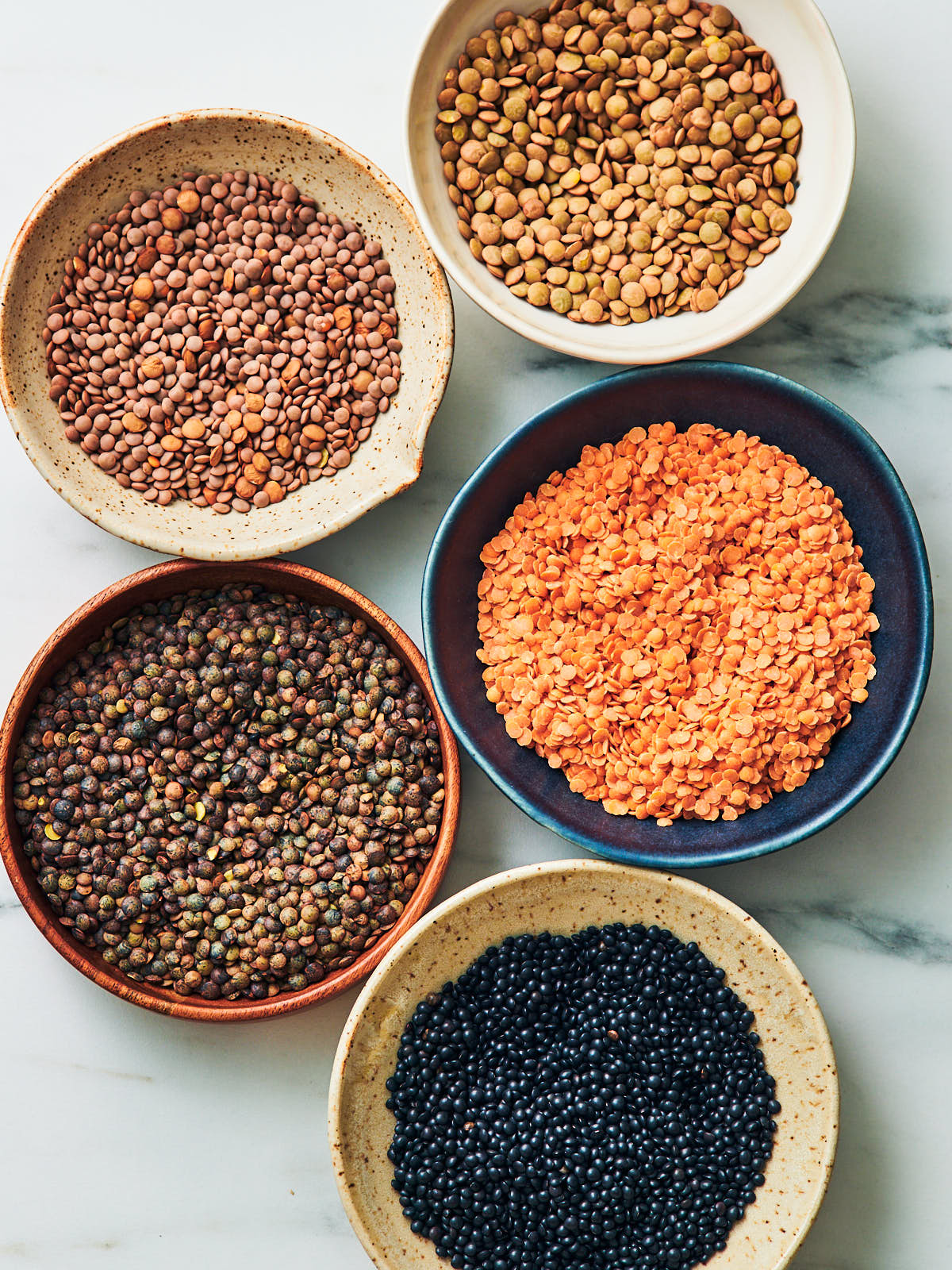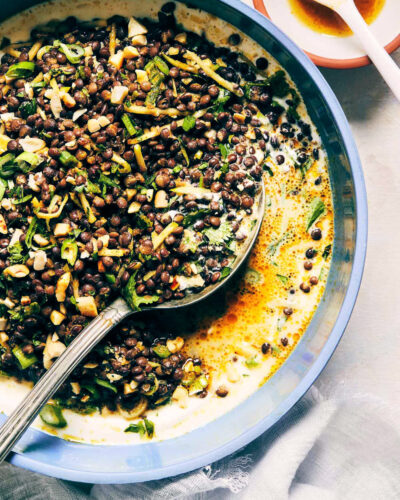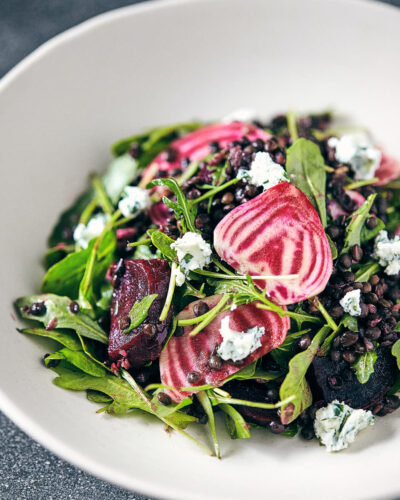
Jump to:
What are lentils?
Lentils (Lens Culinaris) are from the legume family. They're called "pulses", because they're an edible seed from a legume plant. Beans, peas, and chickpeas are also pulses (source).
Lentils are typically sold dried (uncooked) or canned cans (cooked). The most common types of lentils sold in the US are: red, brown, green, French (Lentilles du Puy), and black (Beluga). But there are many more types of lentils out there! Canada is the largest exporter of lentils, followed by India, according to Statista.
Lentils are great for weekday lunches and dinners because they cook quickly. Popular lentils recipes include Red Lentil Soup, Vegetarian Lentil Nicoise Salad, and Mediterranean Lentil Salad with Feta.
Lentils are a nutritious source of protein, folate, fiber, iron, and potassium (source). They are also an inexpensive source of plant-based protein.

Are lentils grains?
Grains are the edible seeds of grass plants belonging to the Poaceae family (source). Wheat, rice, oats, and corn are examples of grains. (Refer to this list for more examples of grains.)
Lentils come from legume plants, whereas grains come from grass plants. So by definition, no—lentils are not grains.
Do lentils have gluten?
Lentils are part of the legume family, which does not contain gluten. So, lentils are naturally gluten-free. But, lentils may get processed in a facility that also contains gluten-containing grains. In those cases, cross-contamination could occur.
A 2022 study, Lentils and Gluten Cross Contact, found that 2 out of 25 packages of lentils (8%) had traces of gluten-containing grains. But, this was limited to 1 or 2 single grains in each (1 lb/454g) bag. For most of the population, this isn't a problem—but it could be a concern for celiacs or those with serious allergies.
Can celiacs eat lentils?
If you have Celiac disease, pay attention to package labels. Some brands will list "Gluten-Free" on the label, while others do not. The Food & Drug Administration (FDA) requires that a food has less than 20 parts per million (ppm) of gluten to be labelled "gluten-free". This threshold is the lowest amount that tests can reliably detect—and is in line with how other countries measure as well.
To exercise the utmost caution, you can also visually sort through the lentils before cooking to confirm there's no wheat or barley grains that accidentally got in.
The National Celiacs Association recommends buying packaged lentils that are certified gluten-free. And, it recommends against buying lentils from bulk bins, because cross-contamination risk is high.

Frequently asked questions
Yes, naturally red lentils are gluten-free. But, lentils can be subject to cross-contamination, so check the package to confirm.
Yes, like other lentils, puy lentils are gluten free. If you are concerned about the risk of cross-contamination, read the package label to confirm.
As with other types of lentils, brown lentils are also gluten free—assuming no cross-contamination occurred during processing. Check the package to confirm.
Yes, green lentils are also naturally gluten free. However, lentils can be processed at a facility that processes wheat, so check the label to confirm if needed.
Yes, black lentils—also known as beluga lentils—are naturally gluten free. But, cross-contamination can occur, so check the label on the package to verify.
Yes, but there may be a risk of gluten cross-contamination, if it's processed at a facility that also processes grains. Read the package label to confirm it is "Gluten-Free".

Best lentils recipes
Here are some of our favorite lentils recipes. All are vegetarian and/or vegan. Let us know which recipe(s) you make at home!











LEAVE A COMMENT